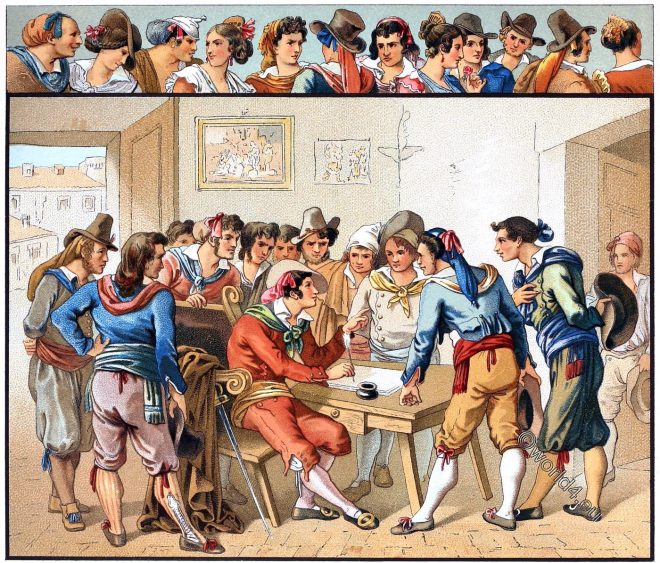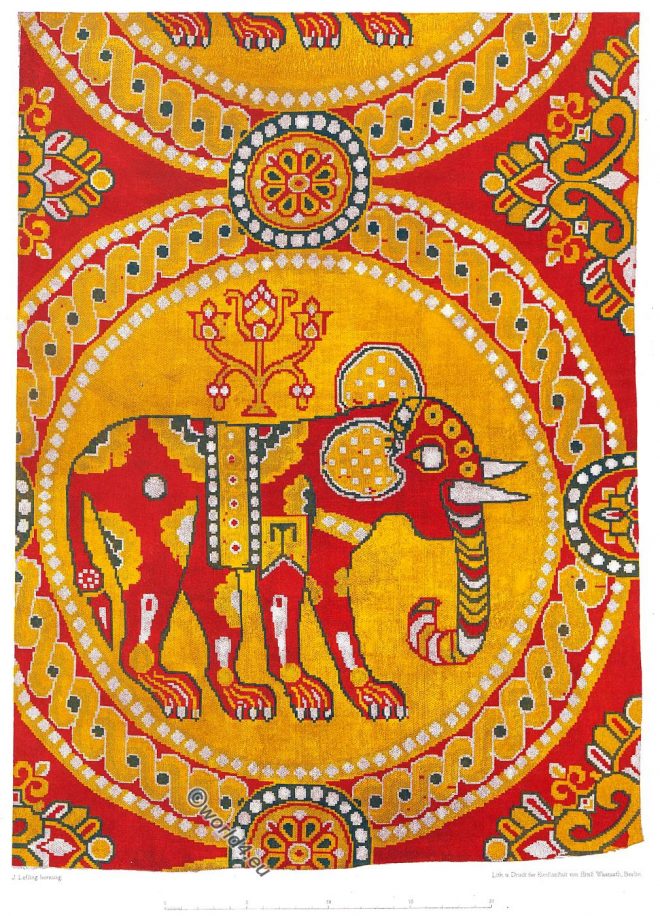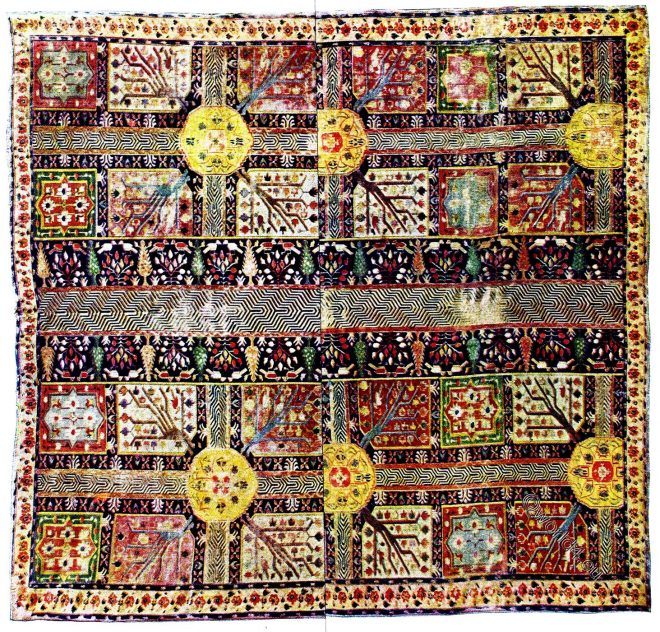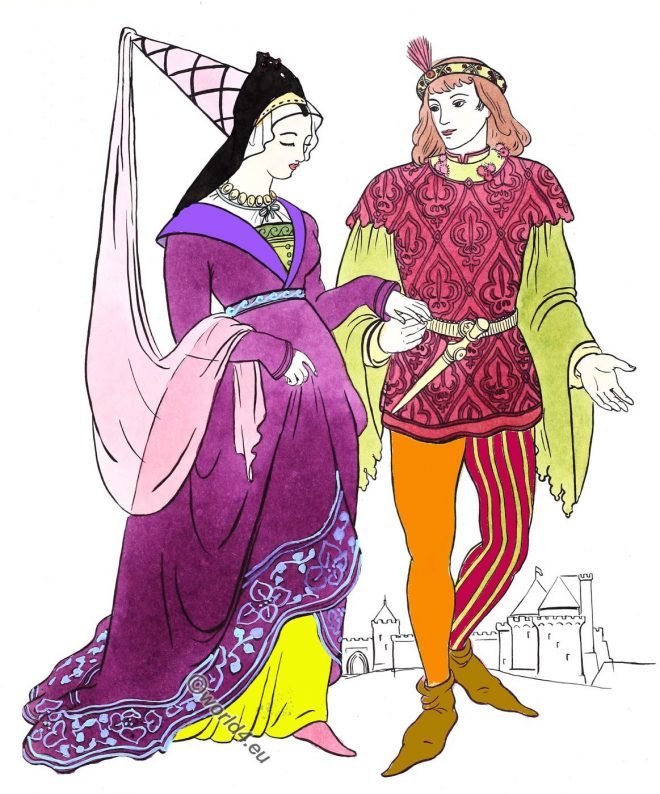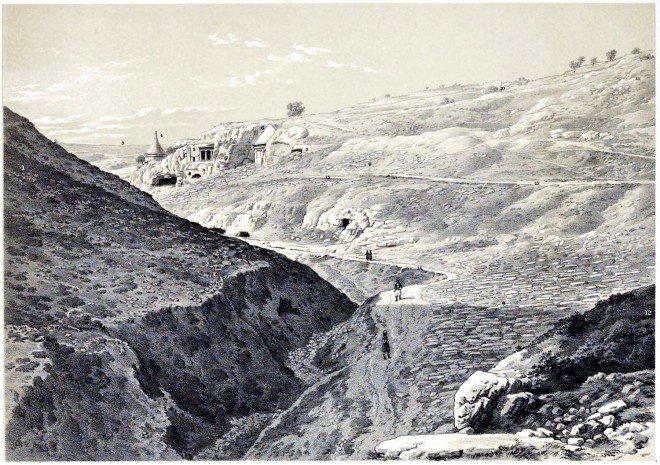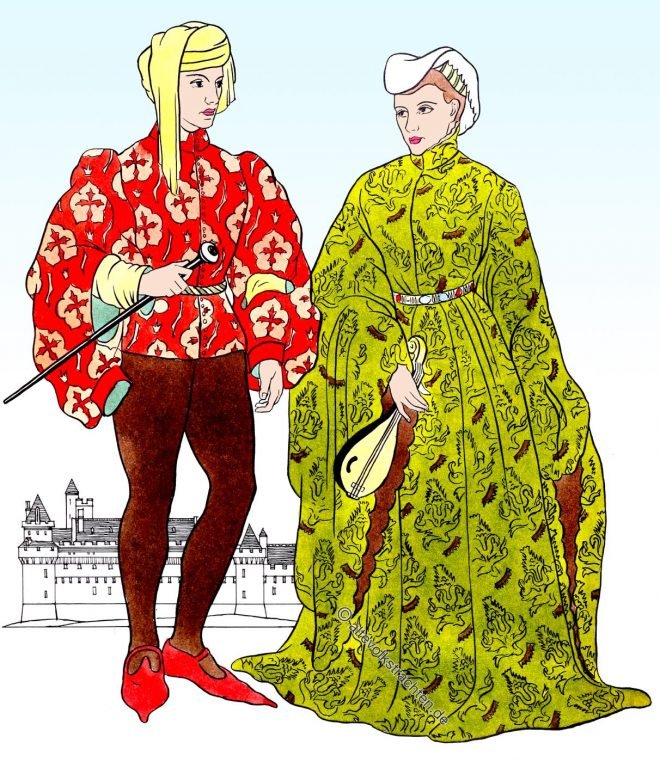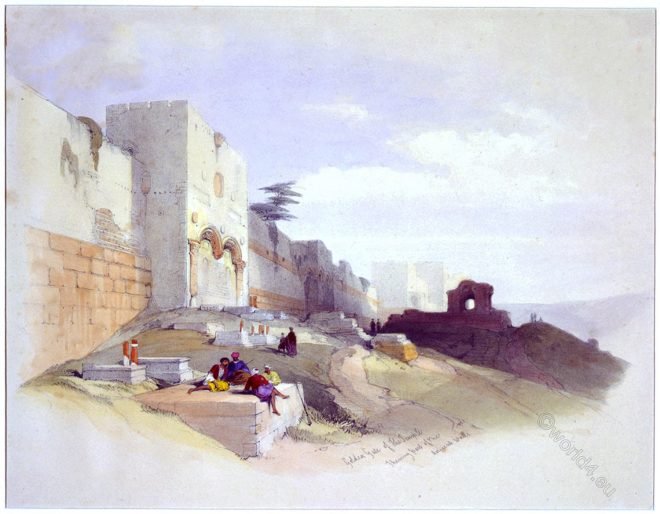Italy. Roman folk costumes from 19th century. Costumes of the inhabitants of Trastevere. The folk hero Meo Patacca.
Byzantine silk fabric with elephants from the 8th to 10th century.
Silk fabric. Background red pattern opposite. Large circles with elephants. The pattern is a Byzantine redesign of an originally Sassanid pattern.
Ancient garden design. A Persian Royal Garden Carpet of the 16th century.
A 16th century Persian Royal Garden Carpet. (Reputed to have been made for Shah Abbas the Great for Sefavi Palace.) Date 1587-1628
Cotehardie, Houppelande and Hennin. Fashion of the late 14th century.
The two people in this plate lived very late in the 14th Century and were probably young fashionables who were up to the minute in their styles.
Entrance to the tombs of the kings, Jerusalem. Plan and sections.
Plan and sections of the Tombs of the Kings, and of other tombs; that of Jehoshaphat, and one like that of our Lord.
Byzantium. Costumes of the Eastern Roman emperor and empress.
History of Costume. Byzantium. 400 – 1100 AD. Costumes of the Eastern Roman emperor and empress.
View of the Valley of Jehoshaphat, by Ermete Pierotti.
View of the Valley of Jehoshaphat, Mount Moriah, Tomb of Absalom, Tomb of S. James, Tomb of Zacharias, Mount of Olives, Road to Siloam etc
Cotehardie and houpelande in the 15th century. Middle Ages.
The cotehardie has adopted its main characteristics from the houppelande. The doublet or gipon. Fashion history. Burgundy 15th century.
The Golden Gate of the Temple at Jerusalem, Israel.
The Golden Gate is a walled gate on the east side of the Jerusalem Temple Mount / Haram ash-Sharif, dating from early Islamic times.
The Church of the Purification at Jerusalem. The Holy Land 1839.
The Church of the Purification is, in fact, not represented in this westward view of the Jerusalem landscape.

